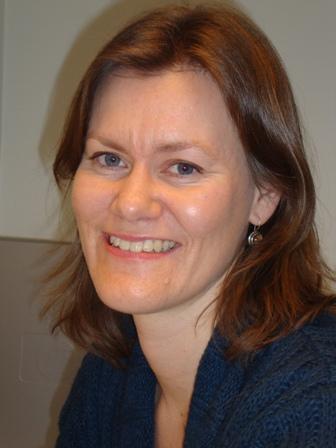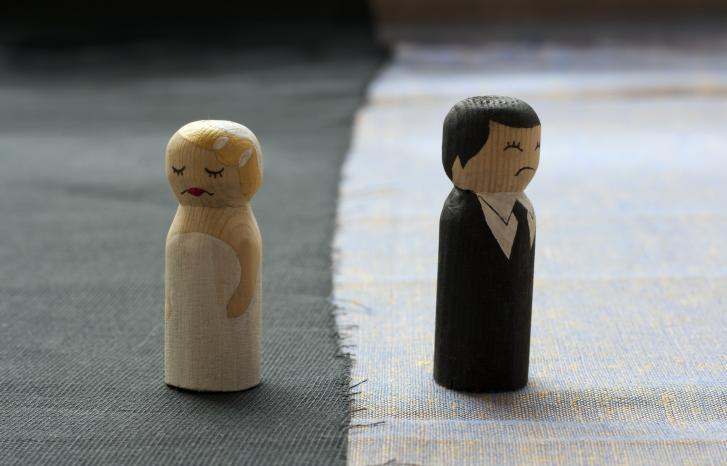Thun’s study is part of the FEMCIT research project (Gendered Citizenship in Multicultural Europe: The Impact of Contemporary Women’s Movements) which held its concluding conference in Oslo in January. Thun was one of the researchers who presented their findings at the conference.
“There are several reasons for the lack of cooperation, above and beyond their different perceptions and positions on women’s issues. A lot of it has to do with external factors, such as how much the organizations receive in government funding for their activities. Another distinction is that majority women don’t regard racism and ethnic discrimination as part of their struggle, whereas this is natural for minority women,” explains Thun, who will submit her thesis this summer.
The FEMCIT project began in 2007 and concludes this year. The aim of the project has been to provide government authorities, academia and politicians with analyses and research results on gender within a multicultural context. One of the tasks was to study the role of women’s organizations, as Thun has done. The Norwegian project group has been comprised of several researchers under the leadership of Beatrice Halsaa.
Do not call themselves feminists
Thun began by compiling a thorough overview of women’s organizations in Norway, both for majority and minority women. She then selected 14 of these, some of them professional groups with full-time employees who work at the political level and other smaller groups whose activities are solely volunteer-based. Thun interviewed various individuals within the organizations, putting emphasis on two questions: How much cooperation takes place between majority and minority women’s organizations, and how do they perceive and define the concept of “women’s issues”? Do they focus on the same issues?
Thun also examined the organizations’ potential to influence the political process. For example, she looked at who had been invited by the government authorities to provide input on various legislative proposals. Thun also wanted to find out how the organizations viewed issues related to ethnic discrimination and racism vis-à-vis feminism.
“Several of the minority women’s organizations did not call themselves feminist, but they did work to promote gender equality. Some of them did not take any position on feminism. Others mentioned the criticism we are familiar with from black feminism – that racism and ethnic discrimination are a ‘natural’ part of the minority women’s struggle. When I interviewed the majority women about this, they often responded that it was ‘other people’s’ job to work on those issues. This probably has to do with their limited resources. The majority women’s organizations also were under the impression that minority women worked mostly with issues related to forced marriage, violence or female circumcision and that as a result they had little in common.”
“Isn’t this right?”
“Yes it is, but minority women are also concerned about equal pay, discrimination in the workplace and the like.”
“Do they have more in common than they themselves realize?”
“Yes, probably. Many majority women’s organizations also said they were afraid to ‘drop a clanger’, to make a statement on forced marriage and similar issues without having an insider’s knowledge. Some were probably afraid of being seen as racist.”
Decided at the political level
When Thun investigated the support schemes for the various organizations, she found another clear reason for the lack of cooperation.

“Majority and minority women’s organizations often receive funding from different ministries and agencies. Usually minority women receive support from the Norwegian Directorate of Integration and Diversity, whereas majority women are funded by the Norwegian Directorate for Youth, Children and Family Affairs. It may also be the case that minority women are granted funding for projects targeted at challenges in their ethnic communities, such as forced marriage, while majority women receive a modest sum for general operating expenses,” Thun explains.
External factors such as these can make it difficult to establish cooperation across groups. The organizations are not viewed as part of a greater whole by those who fund them. Both the majority and minority women’s organizations told Thun that they receive very little support for general operating expenses, and in particular the minority women’s organizations were critical of the fact that they often must work with specific, defined projects in order to be eligible for funding.
“As a consequence, the organizations’ activities are partly decided at the political level,” Thun states.
Thun says that most of the organizations nonetheless understand that it is difficult to make political headway alone, and the minority women’s organizations sometimes enter into alliances with each other. They often find it difficult to know which of the majority women’s organizations it would be natural to work together with. She also adds that some cooperation was taking place between the majority and minority women’s organizations at the local level, but that the interview subjects may not always have been aware of this.
It’s not that they don’t care
“Are there really no examples of cooperation across the organizations?”
“Oh yes. In the 1980s they cooperated on issues such as on the three-year rule regarding marriage (editor’s note: this regulation required persons who came to Norway for the purpose of family reunification with a spouse or partner to wait three years before obtaining residency on an independent basis)”.
“Majority women’s organizations are often accused of not caring enough about the challenges faced by minority women. Is this true?”
“No, I don’t think so. As I have explained, the lack of cooperation is often the result of external factors. In addition to different support schemes, it appears that two different spheres have been established: ‘minority women’s issues’ and ‘majority women’s issues’. This is also the case when it is decided which organizations will be invited to provide input at hearings on various legislative proposals. What is striking from all the interviews is how hard these organizations work! There is an enormous effort being made in many camps, and I was impressed by both the majority and the minority women’s organizations,” says Thun.
Studies similar to Thun’s were conducted in both Spain and Great Britain in cooperation with other FEMCIT researchers, and the findings from these will be published in upcoming books.
Translated by Connie Stultz
Cecilie Thun is a sociologist and a phd research fellow at the Centre for Gender Research at the University of Oslo.
Her phd-project is partly financed by the FEMCIT project, and partly by the PLUREQ project.
FEMCIT (Gendered Citizenship in Multicultural Europe: The Impact of Contemporary Women’s Movements) is a research project funded under the EU Sixth Framework Programme. The project is interdisciplinary and has involved 15 partners from 11 European countries. The research began in 2007, and the concluding conference was held in January 2011. The project has examined how citizenship is gendered and how women, as ordinary citizens and activists, have been involved in influencing, challenging and changing women’s and men’s participation in society throughout Europe.
The researchers have a contract with Palgrave Macmillan, and a series of monographs will be published in the near future. They have also published a number of working papers which can be downloaded from the FEMCIT website.
Aktuelle lenker
The PLUREQ research project studied the processes through which equality policies are developed. The research asked how the women's movement and gender equality policies integrate cultural and religious diversity, especially with regards to protection against discrimination and anti-violence policies



